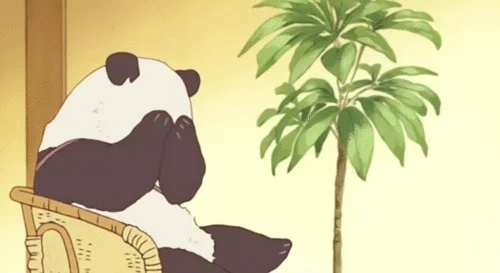Originally published at: Bamboo isn't just for pandas. Check out these 40% bamboo sheet sets at under $35 | Boing Boing
…
What a great sale, I was ready to buy multiple sets! But I live in Hawaii so I can’t give you my money. If you’re going to sell any kind of merch, you need to make sure that all of your readers can take advantage and not discriminate against people based on location. Believe it or not, you can actually send mail and ship packages to Hawaii, it’s not 1860 anymore.

Can I use bamboo to steal an election? Asking for a paranoid conspiracy theorist friend in Arizona…
Don’t know why, but I read this as “bamboo isn’t just for PALLETS”. So of course I thought no silly, bamboo is for ballots!
Usual disclaimer about bamboo bedding
Hah, I knew it, these ballots are printed on bed sheets!!! I can tell by the pixels!
They’ve obviously just discovered that not only do I have bamboo bedsheets, but also bamboo boxers…

At least until the next round of Post Office changes being introduced by DeJoy.
In any event, if you can tolerate the coarse texture I recommend a linen/cotton blend for our humid climate.
Like I wrote before on a similar boingboing shop ad: to use the name ‘bamboo’ for these materials is misleading. Greenwashing bordering on deceit. It’s viscose. If you use bamboo as a source for your cellulose or wood or whatever, it doesn’t matter. The final material will be the same: viscose.
Now viscose is quite a nice material for clothing, there’s not so much wrong with that purely as a material. But the process to create viscose involves some very toxic an environmentally unfriendly chemicals. And the producers are trying to hide that by calling it ‘bamboo’.
The bamboo sheets we have (which are fine) are only about 20% bamboo, the rest polyester. I’d imagine that’s typical.
Let’s not beat around the bush - you can bamboozle some of the people all of the time and the rest just won’t buy it.
BTW, they discovered how to make silk from the soy residue left from tofu production. Maybe the bulk of silk coming out of China doesn’t derive from mulberry munching silkworms. Looks like silk, feels like silk. Somebody made a buck. Those jammies are probably not silk. Now you can cry yourself to sleep on your bamboo pillow knowing it is “hugely absorbent”. Enough to soak up the tears of a clown at least.
It’s the re-labelling of rayon derived from bamboo as though it were bamboo that is the misleading part.
It would be a bit like selling candles made from wax derived from beef tallow and saying the candles were made of beef steaks.
![]()
Well, if they can make silk from soy it might be an improvement to the ‘boiling caterpillars alive’ process of real silk.
I don’t really care if it’s really bamboo or viscose, but viscose is just not a very environmentally friendly fabric. And they make it seem like it is. And that’s where I draw the line.
`Oh, it’s well over the border, and into “fraudulent advertising” territory, at least in the US.
Here’s what the FTC says about it:
Bamboo Textiles
Under the Textile Fiber Products Identification Act and the Textile Fiber Rule, textile fibers must be labeled and advertised as provided by the FTC. Textiles can only be called bamboo if they are made directly from actual bamboo fiber. Textiles made from rayon (or viscose, which is the same thing) that was created using bamboo as a plant source may be labeled and advertised as “rayon (or viscose) made from bamboo.” Sellers are responsible for ensuring that their textile products are labeled and advertised correctly.
In a blog post, HOW TO AVOID BAMBOOZLING YOUR CUSTOMERS they also note that…
The truth is, most “bamboo” textile products, if not all, really are rayon, which typically is made using environmentally toxic chemicals in a process that emits hazardous pollutants into the air. While different plants, including bamboo, can be used as a source material to create rayon, there’s no trace of the original plant in the finished rayon product.
If you make, advertise or sell bamboo-based textiles, the Federal Trade Commission, the nation’s consumer protection agency, wants you to know that unless a product is made directly with bamboo fiber — often called “mechanically processed bamboo” — it can’t be called bamboo. Indeed, to advertise or label a product as “bamboo,” you need competent and reliable evidence, such as scientific tests and analyses, to show that it’s made of actual bamboo fiber. Relying on other people’s claims isn’t substantiation. The same standard applies to other claims, like a claim that rayon fibers retain natural antimicrobial properties from the bamboo plant.
If you sell clothing, linens, or other textile products, you’re responsible for making truthful disclosures about the fiber content. If your product isn’t made directly of bamboo fiber — but is a manufactured fiber for which bamboo was the plant source — it should be labeled and advertised using the proper generic name for the fiber, such as rayon, or “rayon made from bamboo.”
Any claims you make about your textile products have to be true and cannot be misleading. As the seller, you must have substantiation for each and every claim — express and implied — that you make.
So yeah, not just fraudulent advertising, but shameful, deceitful greenwashing as well. ![]()
This topic was automatically closed after 5 days. New replies are no longer allowed.